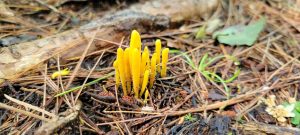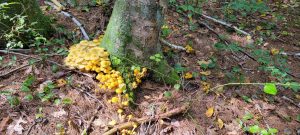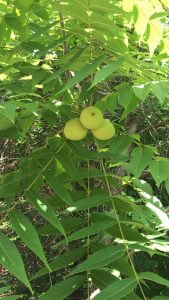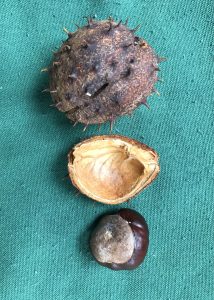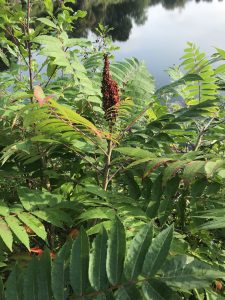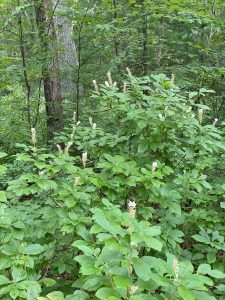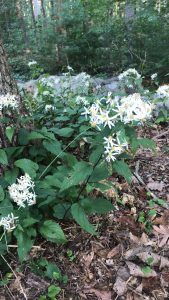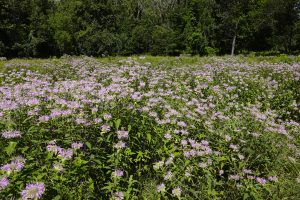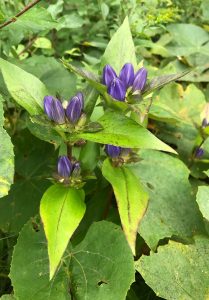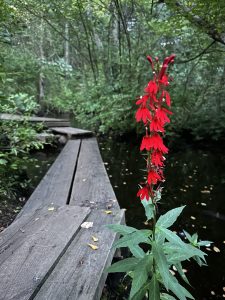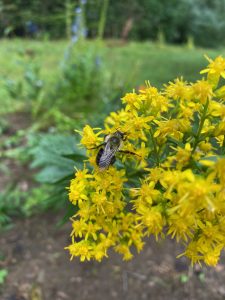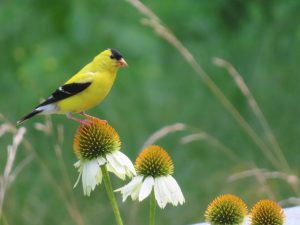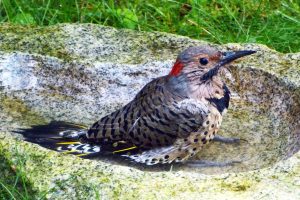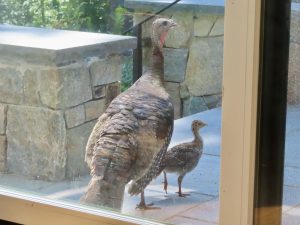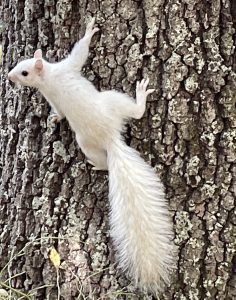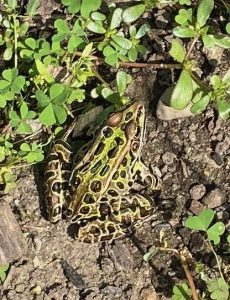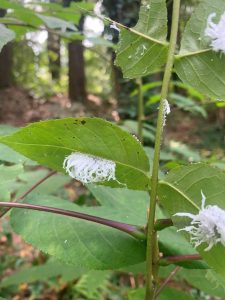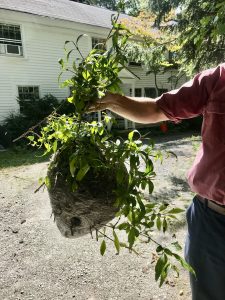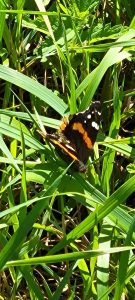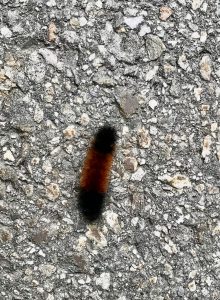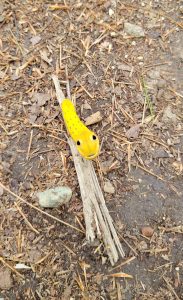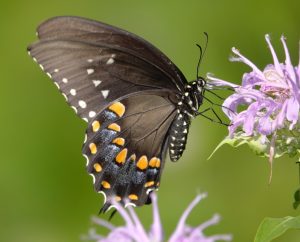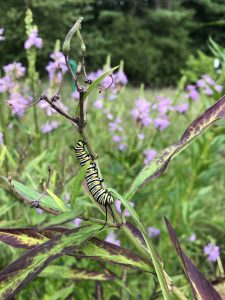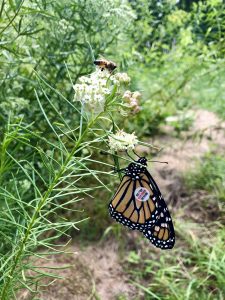Written by Gwyn Loud for the Lincoln Land Conservation Trust. She welcomes your sightings and questions at 781-259-8690 or gwynloud555@gmail.com
Fall will arrive on Sept. 23, the autumnal equinox, but the first week of the month felt as if we were going back into summer. Unusually high temperatures and humidity made life uncomfortable, and I think we are all eager for cool, dry, crisp autumn days. August brought more rain. The historical average August rainfall for Metro-West is 3.72” and we more than doubled it, with 8.41”. Streams are rushing and ponds are full.
This is a season rich with seeds and berries, all food for wildlife. Judging by acorns dropping from both white and black oaks, this will be a good mast year, meaning plentiful food to help many animals, including squirrels, chipmunks, and blue jays, through the winter. White pines also seem to be producing a healthy cone crop this year. Only a few trees are showing glimpses of fall color so far and some deciduous trees have brown curling leaves, perhaps due to a type of fungus. If you see what look like green tennis balls hanging from a tree, you have come cross a black walnut tree. Horse chestnuts, with their spiky brown seed coats, will soon fall to the ground under the trees; in England of yore, horse chestnuts were called conkers and children played games with them. I have been noticing ailanthus trees (aka tree -of-heaven), which look a lot like sumacs and have showy clusters of seeds. They are invasive and worrisome because they are the favored host of spotted lantern fly, a pest which has done a lot of damage in neighboring states (e.g. Connecticut, New York). See link below to learn more. Vines such as poison ivy and Virginia creeper seem to be growing especially vigorously, perhaps due to all the rain. Recent research shows that, due to increased CO2 in the air, poison ivy is becoming more toxic, with bigger leaves.
Goldenrod is blooming, colorful and a wonderful source of pollen for bees. Patches of purple loosestrife (invasive) are blooming here and there but it is not as widespread as it once once, thanks to biological control by a beetle. Queen Anne’s lace decorates fields, and in weedy patches watch for smartweed (pink). White wood aster is flowering along wooded trails, and touch-me-not (aka jewelweed) is blooming in damp areas and favored by hummingbirds, which find nectar in the tube-like flowers. If you are lucky you may come across the spectacular red cardinal flower along a stream or marsh or a beautiful blue closed gentian in a damp meadow. Many species of fungi are flourishing, thanks to all the wet weather. In August, a walker was delighted to come across enormous patches of flowering wild bergamot at Tanner’s Brook. Two species of bumblebees were busy on the blossoms.
Birds of interest observed in recent weeks include a flock of twenty-five killdeer in the sunflower field at Ricci Field and, in many parts of town, young red-tailed hawks, out of the nest but still calling their parents. A brown thrasher, once much more common, visited a garden on Tower Rd. and at Drumlin Farm a very early migrating American pipit was spotted as well as a yellow-throated vireo. On Farrar Pond two adult mute swans and one cygnet persist, the survivor of a larger clutch. One of my neighbors had a visit for three days from a wild turkey with a poult; they would eat blueberries and bugs but then come right up to the door as if wanting to come in.
Both tree swallows and Eastern bluebirds had a successful breeding season, judging by numbers of fledglings monitored in bird boxes at Drumlin Farm and by Patti Cable on LLCT property. In both cases the numbers were better than last year. A resident near Farrar Pond reported a “heroic pair” of bluebirds successfully raising three broods of young. Although some bluebirds migrate south, many stay here all winter and enjoy suet or mealworms at our feeders. I have had several cardinals and blue jays at my feeder recently looking partly bald, with missing head feathers. This might be caused by mites but is more likely just the annual post-breeding molt with new feathers growing in soon. Male American goldfinches are handsome in their bright yellow and black breeding plumage but they will soon molt into a drabber olive color for the winter.
The fall bird migration is underway, with some of our summer residents already on their journey. Large flocks of grackles and red-winged blackbirds have not yet been seen. Ruby-throated hummingbirds will disappear within the next couple of weeks, and birds such as rose-breasted grosbeaks and barn swallows have left. Common nighthawks were observed winging their way south at dusk, catching insects on the wing. Warblers which breed farther north are passing through Lincoln; so far black-and-white and Nashville warblers have been reported. One of the last warblers will be blackpolls; they migrate more than 2,000 miles across open water without stopping, sometimes flying for more than 80 hours straight until they reach their Amazon wintering grounds. Bobolinks, which nest here in Lincoln, are also long-distance migrants, traveling over 12,000 miles round-trip to winter in Bolivia Paraguay, and Argentina. Smoke from Canadian wildfires last month actually forced some warblers to leave their boreal breeding grounds to migrate much earlier than usual and smoke in their lungs may impact their respiratory strength. Some of our local summer avian residents do not migrate great distances. Many gray catbirds, for instance, only go as far as the mid-Atlantic states.
Homeowners’ trail cameras have picked up otters, muskrats, a mink and plenty of deer, especially bucks. Carol Roede wrote, “One muskrat likes to spend time grooming and eating on a tiny island in front of my camera. And in one video I could see a fish in the water- which is great, considering how dried up everything got last year.” She also noticed a red squirrel deposit a baby in the crotch of a juniper tree and subsequently the four babies came out periodically to clamber around. A red squirrel eating pine cone seeds made piles of stripped pine cones on rocks in the woods. Another resident was surprised to lower an external shade on a kitchen window and discover a bat roosting on the inner side. Eventually the bat panicked and flew off into the woods. I continue to hear coyotes howl at night. According to Mass Audubon’s Outdoor Almanac, “Most howls come from a few adults trying to locate each other or warning outsiders to stay off their territory or from pups practicing how to howl with their parents.” An observer reported seeing an opossum, skunk, and fisher killed on the road over the past month.
Gray tree frogs have been calling off and on right to the present, something I do not recall from previous years. Perhaps the wet summer has triggered their response. We think of spring peepers giving their spring chorus but they can actually be heard, usually just one at a time, calling in any month, sometimes far from water. Snapping turtles may be hatching now, though some wait to hatch until the spring.
The insect chorus of crickets, cicadas, and katydids has been especially loud on the recent hot days and nights. There are “grasshoppers galore” in the long grass. In August, sadly, I had to have two bald-faced hornet nests removed as they were in low bushes right by the house. Bald-faced hornets are aggressive. The nests, made painstakingly by the wasps, are works of art. The wasps chew wood pulp and mix it with saliva to create the paper-like material. An odd-looking larva was found recently on a black walnut sapling: a butternut woollyworm. It has wavy white filaments which look like wool and is the caterpillar of a sawfly, a wasp-like insect. Recently I found my first woolly bear caterpillar of the season. It will overwinter as a caterpillar, spin a cocoon in the spring, then emerge as an Isabella tiger moth.
Observers have seen various butterflies all summer including a clouded sulphur, red admiral, a skipper, and many tiger swallowtails, black swallowtails, and spicebush swallowtails. Monarchs have been reported, but in small numbers. Carol Roede has found the larvae feeding on swamp milkweed and she has been tagging the adults as part of the Monarch Watch program. The monarchs we see now are on their migration south to overwinter in the mountains of Mexico. They have never made this trip before but know just where to go, which always amazes me.
Relevant links


